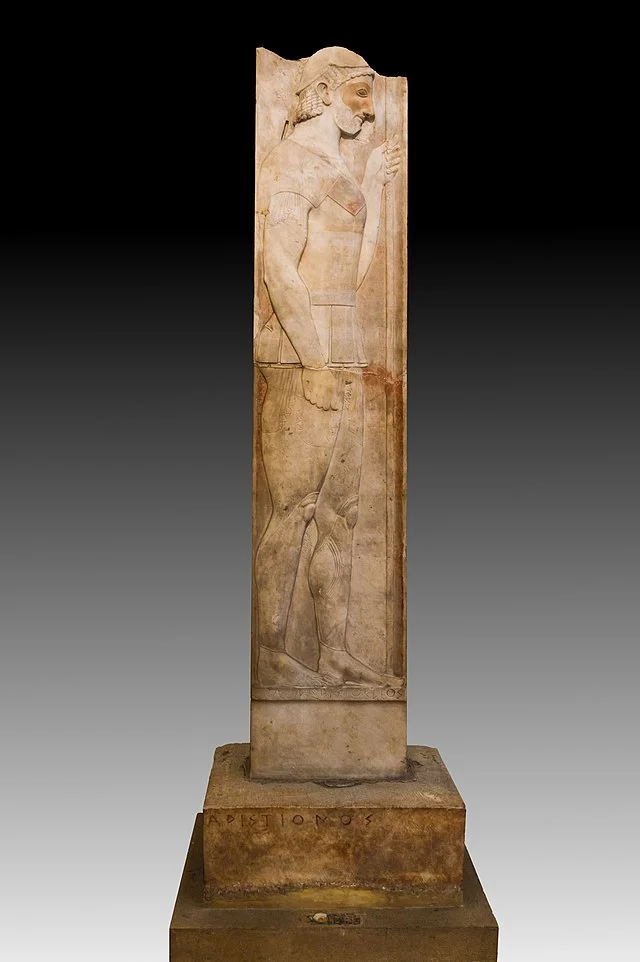The Stele of Aristion is an ancient Greek funerary monument from around 510 BC. This stone stele, carved by the sculptor Aristokles, commemorates a man named Aristion, likely a fallen warrior.
Get your dose of History via Email
Discovery and Description
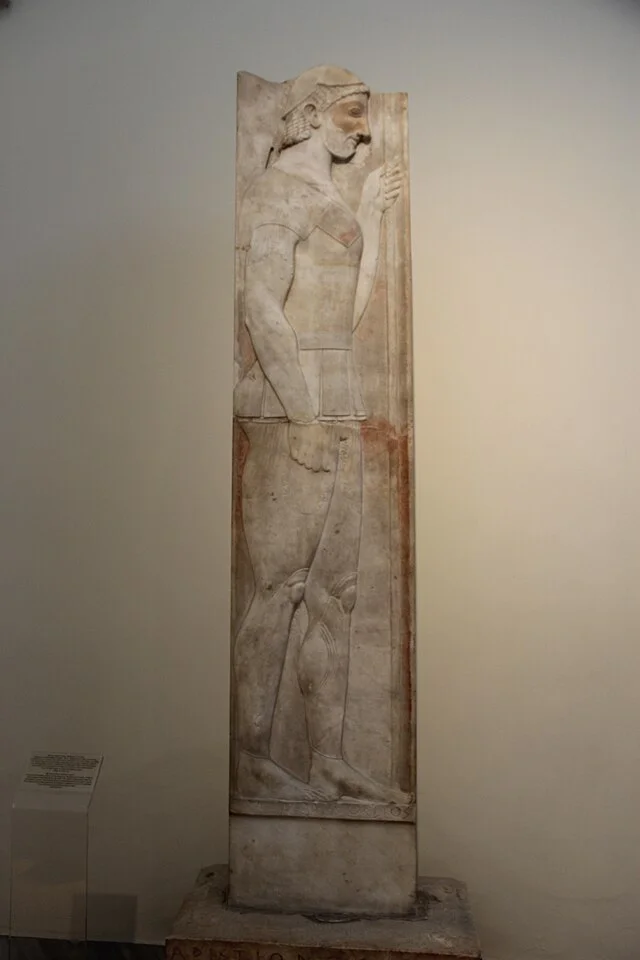
Archaeologists discovered the Stele of Aristion in 1838 near the town of Velanideza in Attica, Greece. It is now housed in the National Archaeological Museum of Athens. The stele stands over six feet tall and is made from fine marble. It depicts a fully armored hoplite, or Greek soldier, in relief, showcasing the artistry and craftsmanship of early Classical Greek sculpture.
Artistic Style
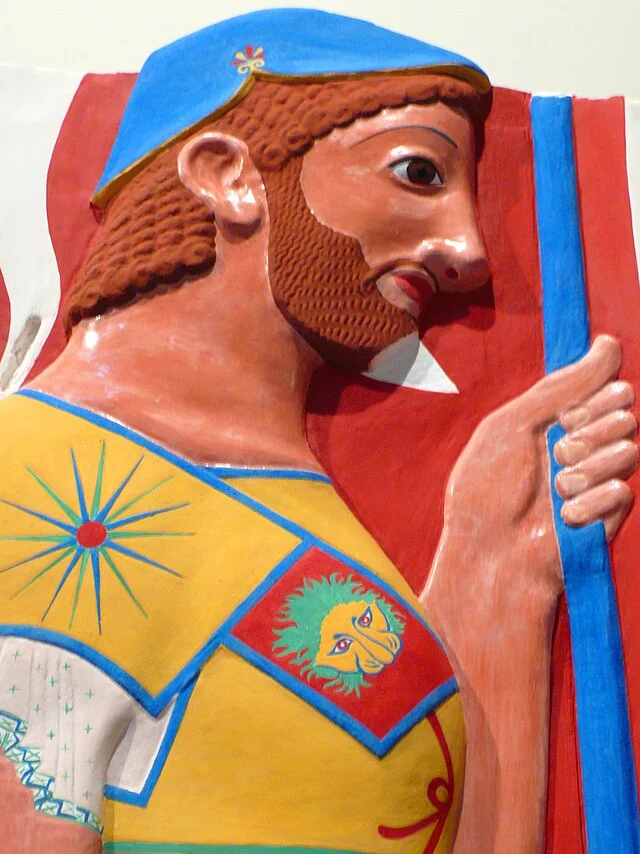
The relief on the stele reflects the Archaic style of Greek art. The soldier is shown in a rigid pose, with detailed armor and weapons, emphasizing the strength and dignity of the fallen warrior. The figure’s facial features exhibit the characteristic “Archaic smile,” a stylistic element common in Greek sculptures of this period. However, the proportions and drapery hint at the emerging Classical style, showing the transition in Greek art toward more naturalistic depictions of the human body.
Function and Significance
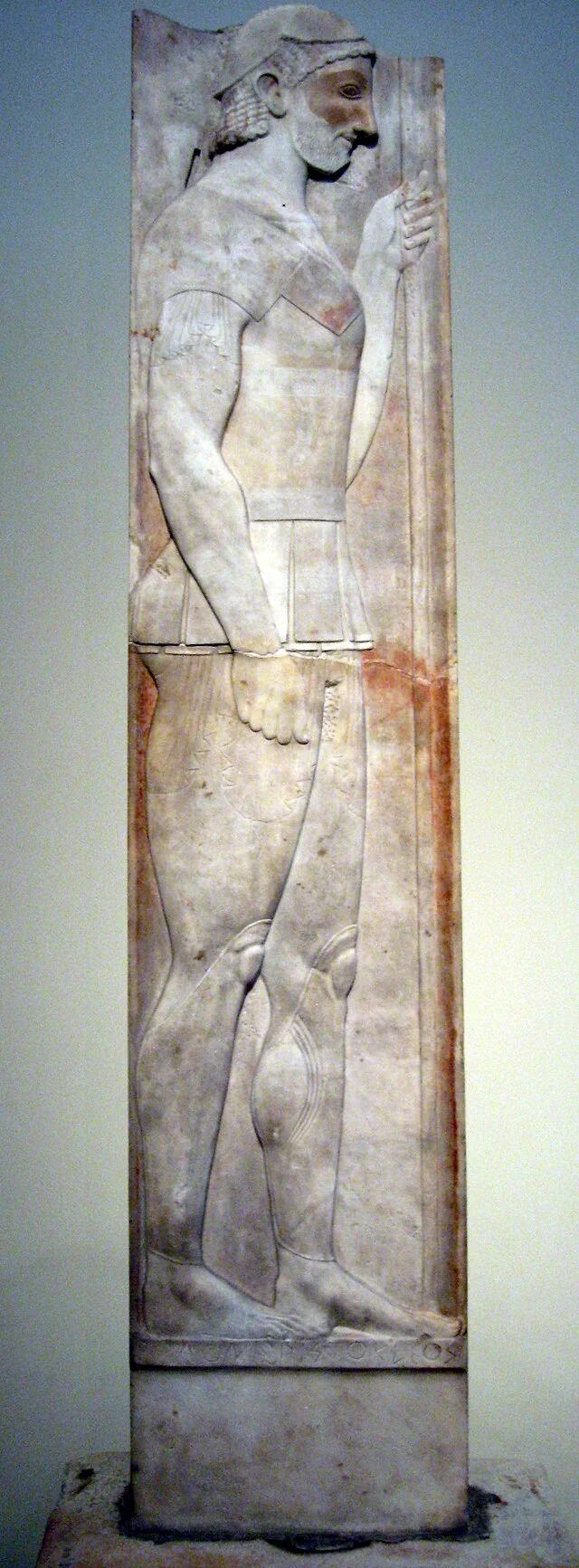
Funerary steles like that of Aristion served as grave markers in ancient Greece. They commemorated the deceased and often celebrated their social status or achievements. In Aristion’s case, the depiction of a hoplite highlights his role as a warrior, suggesting he may have died in battle. These monuments also reflected the values of Greek society, particularly the emphasis on military service and heroism.
Aristokles, the Sculptor
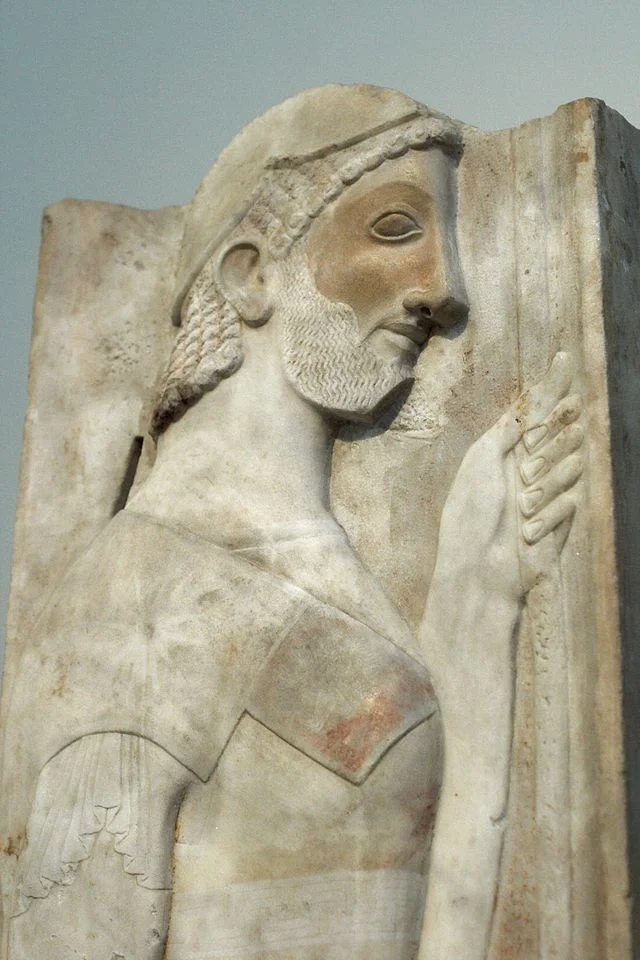
The base of the stele is inscribed with the name “Aristokles,” identifying the artist. Aristokles was a notable sculptor of the Archaic period, though little is known about his life. His work on the Stele of Aristion demonstrates a high level of skill, particularly in the detailed rendering of the armor and the anatomical precision of the figure. This inscription provides valuable information about the role of individual artists in Greek society, as many sculptures from this period remain anonymous.
Historical Context
The Stele of Aristion was created during a pivotal time in Greek history. Around 510 BC, Athens was undergoing significant political and social changes, transitioning from tyranny to early democracy. This period also saw the rise of the Greek city-state, or polis, and increasing conflicts with Persia. Aristion, depicted as a hoplite, likely participated in the ongoing military engagements of the time, possibly linked to these broader historical events.
Conclusion
The Stele of Aristion stands as a testament to ancient Greek funerary traditions and artistic development. Its detailed craftsmanship and historical significance offer insight into Greek society’s values, particularly its reverence for warriors. Moreover, the stele provides a glimpse into the transition from Archaic to Classical Greek art, reflecting broader changes in both aesthetics and society.
Source:

